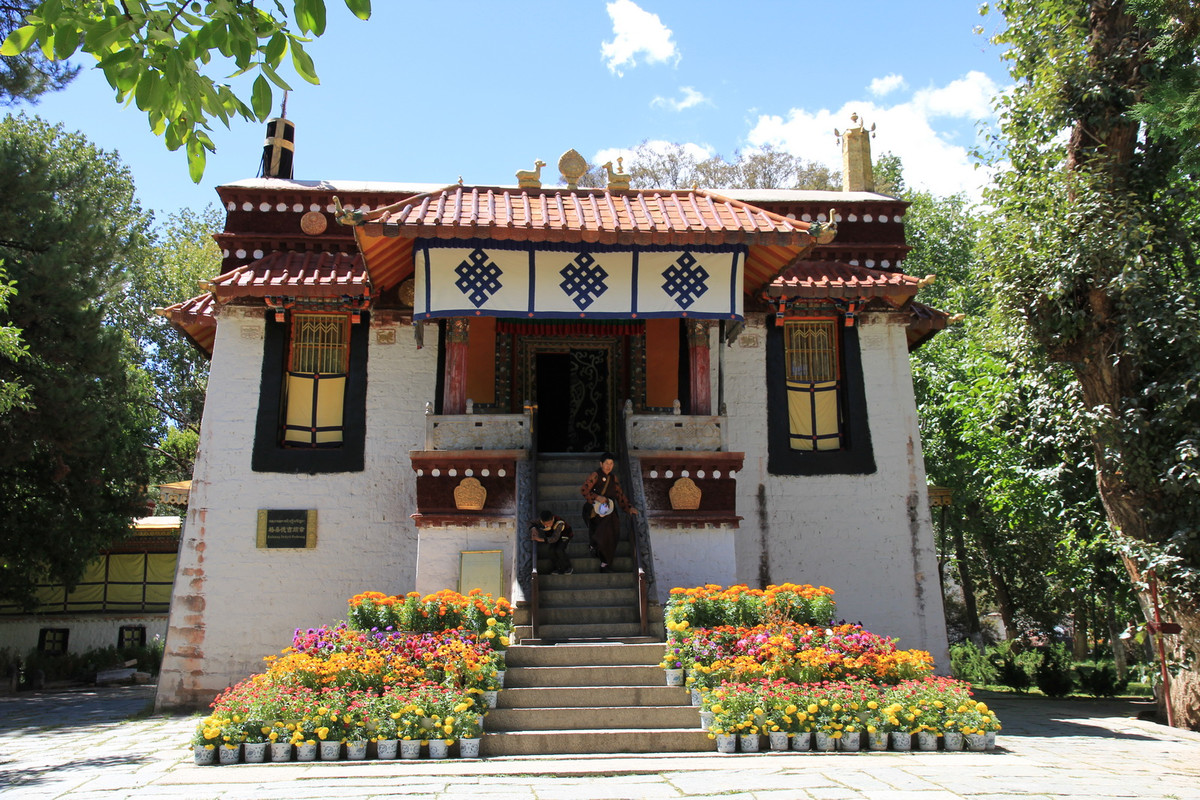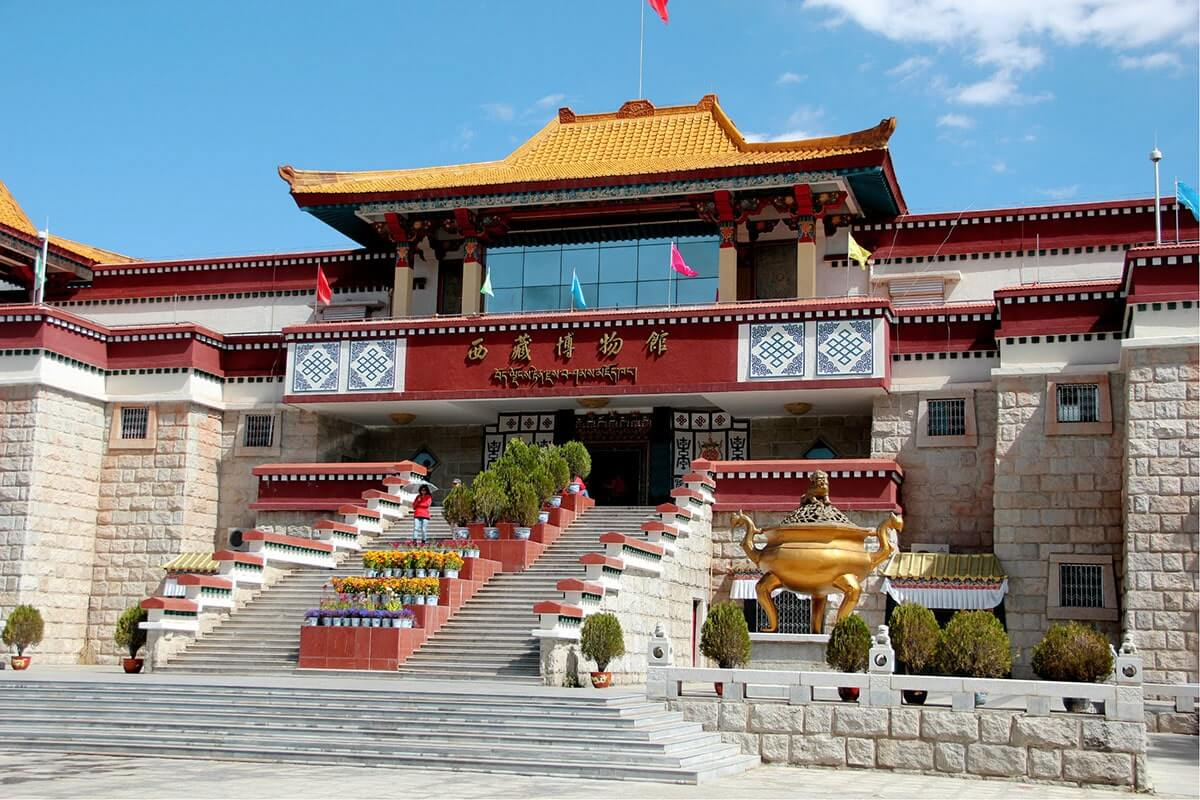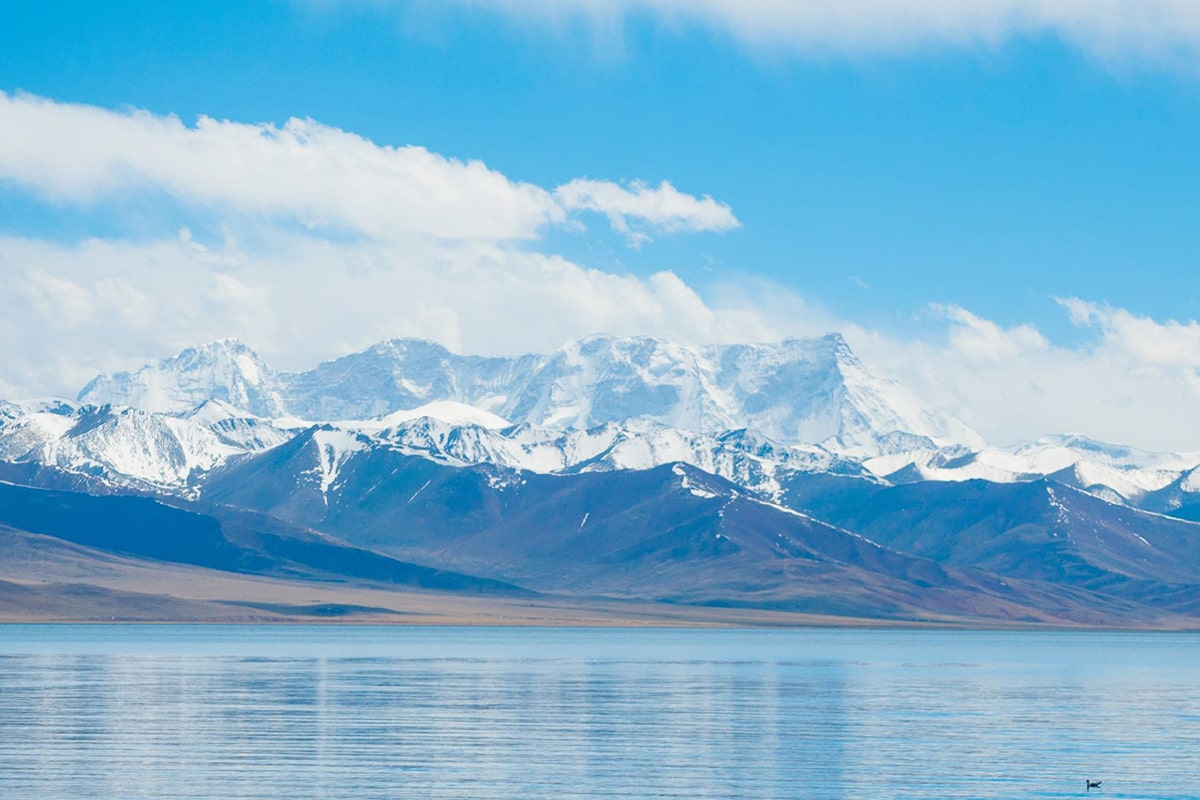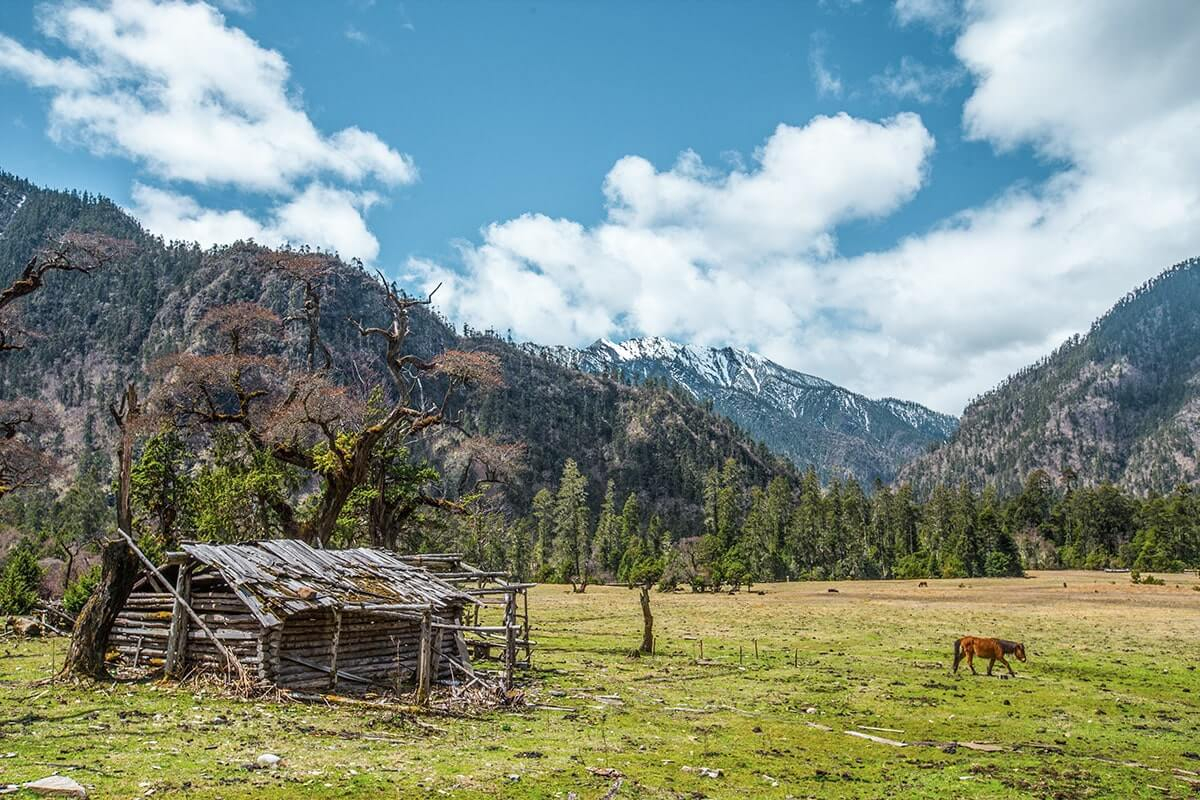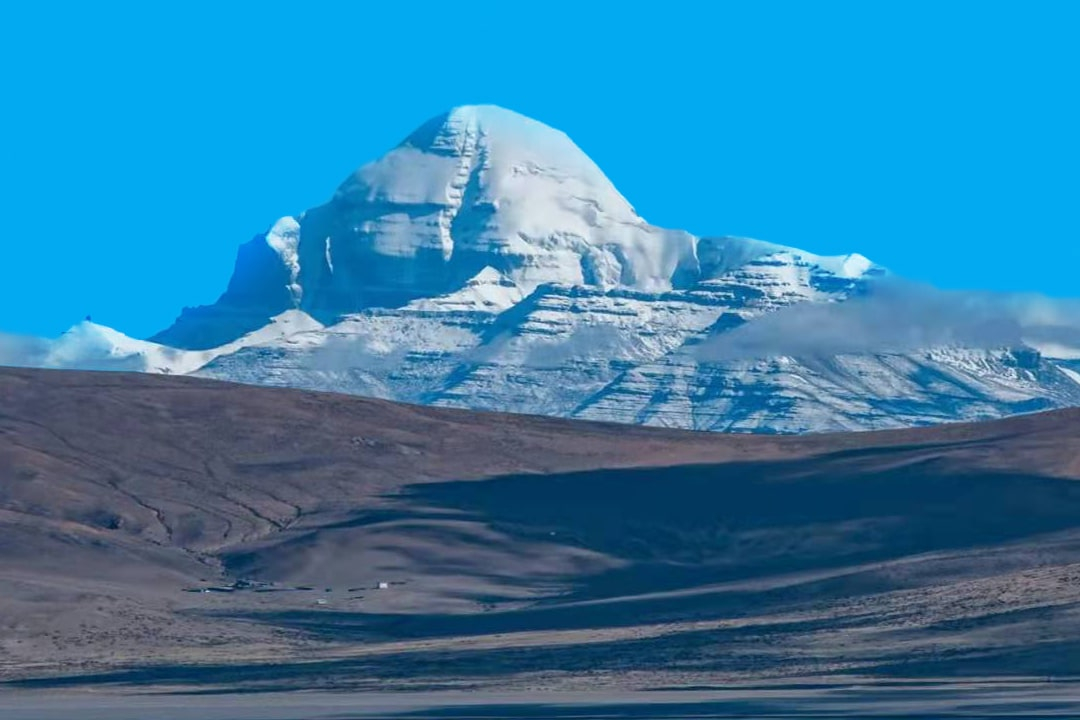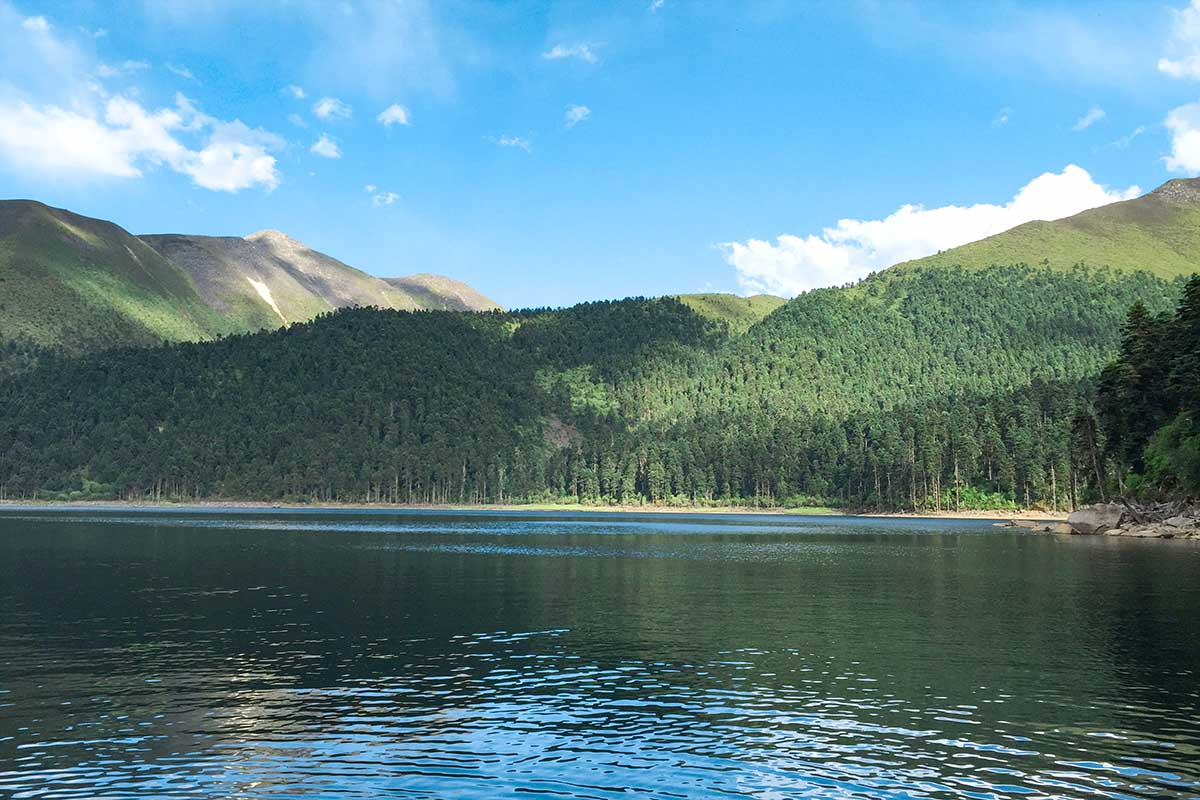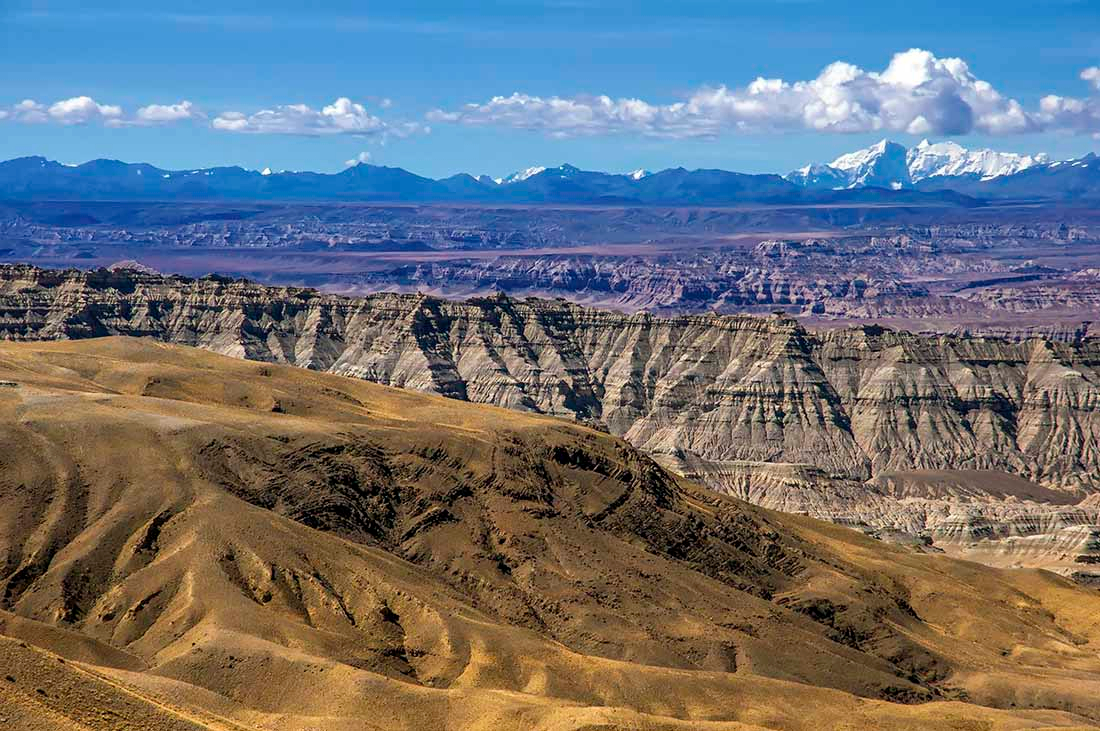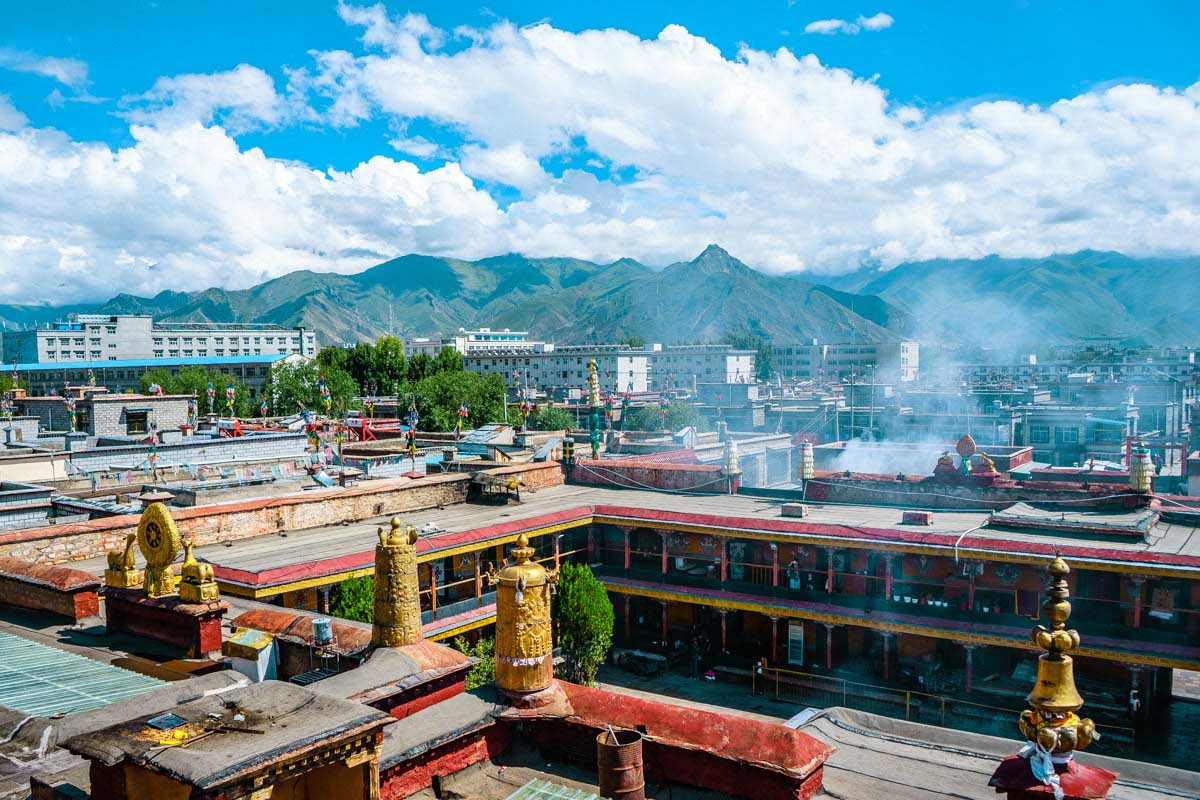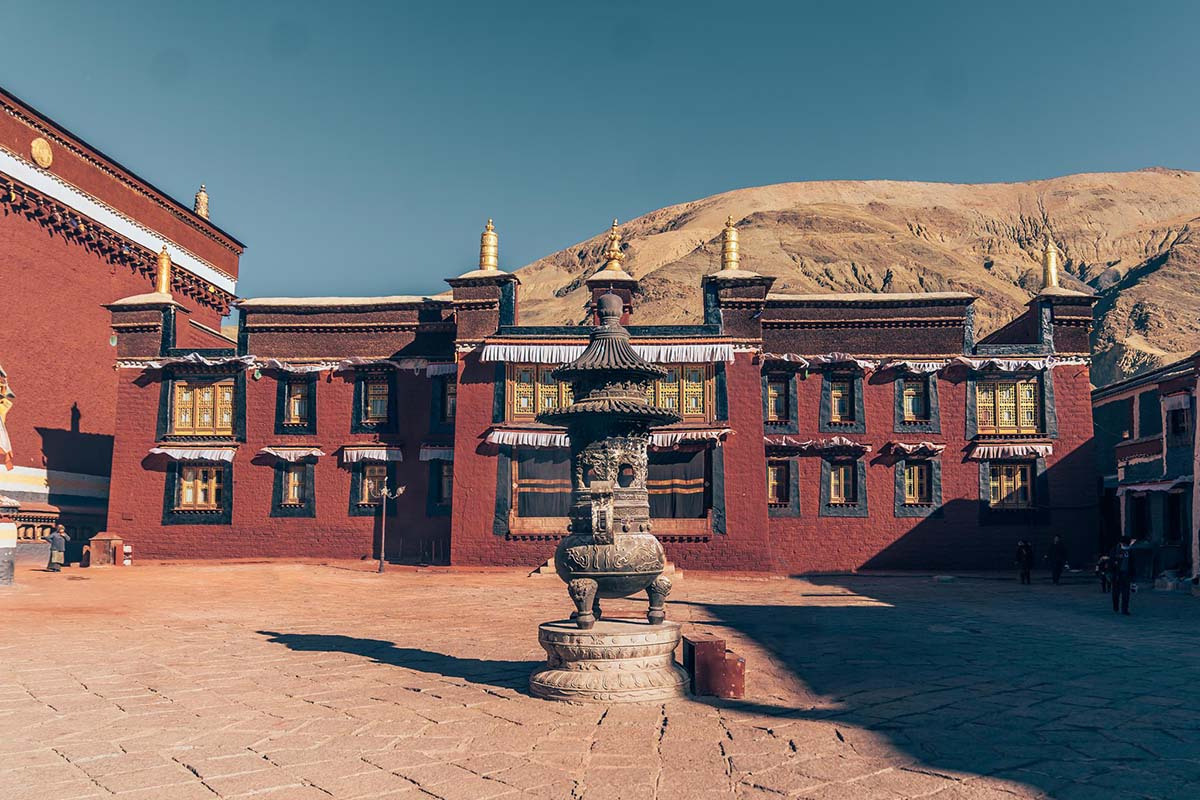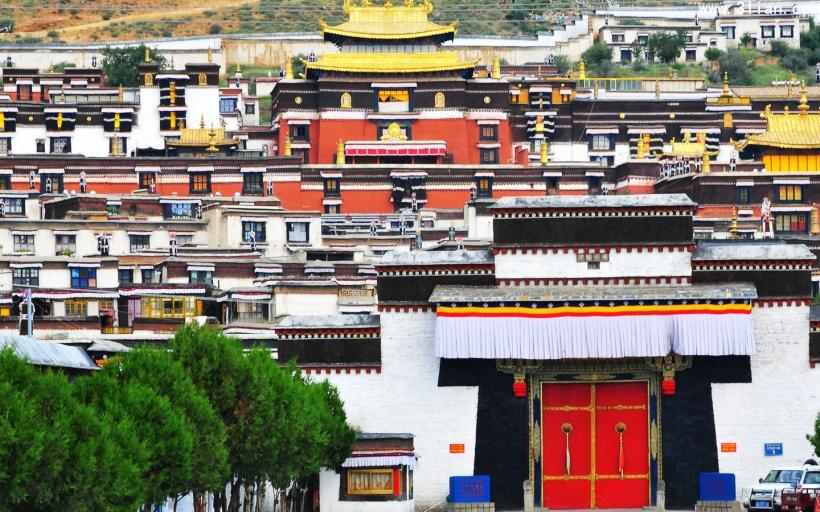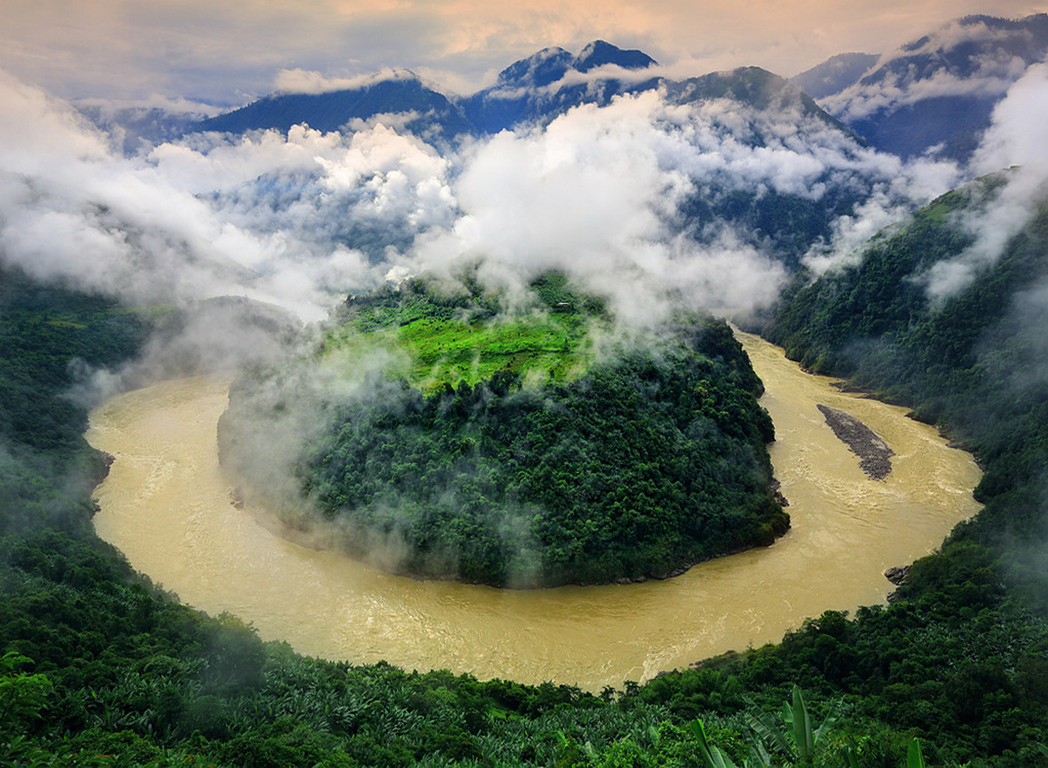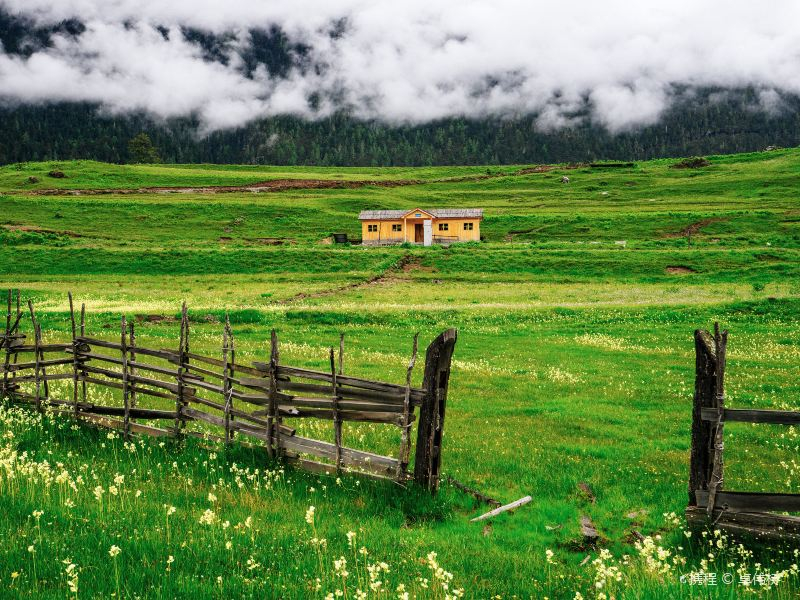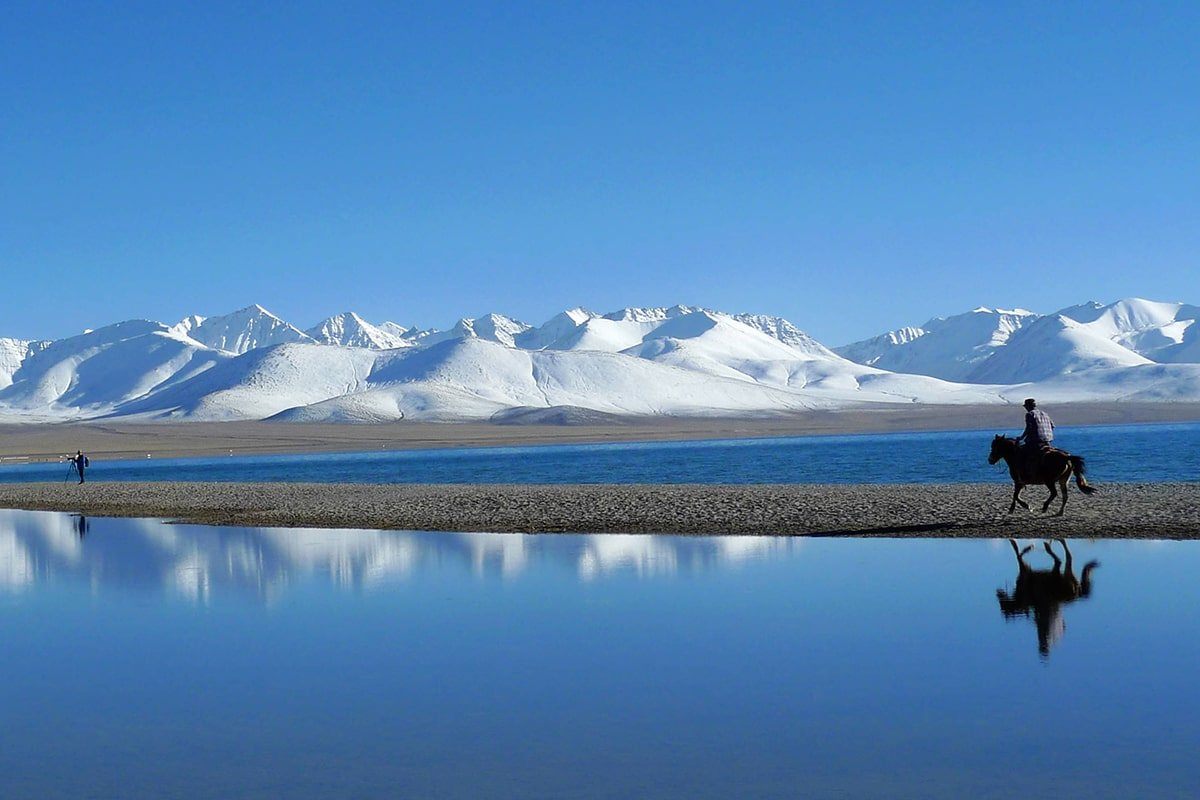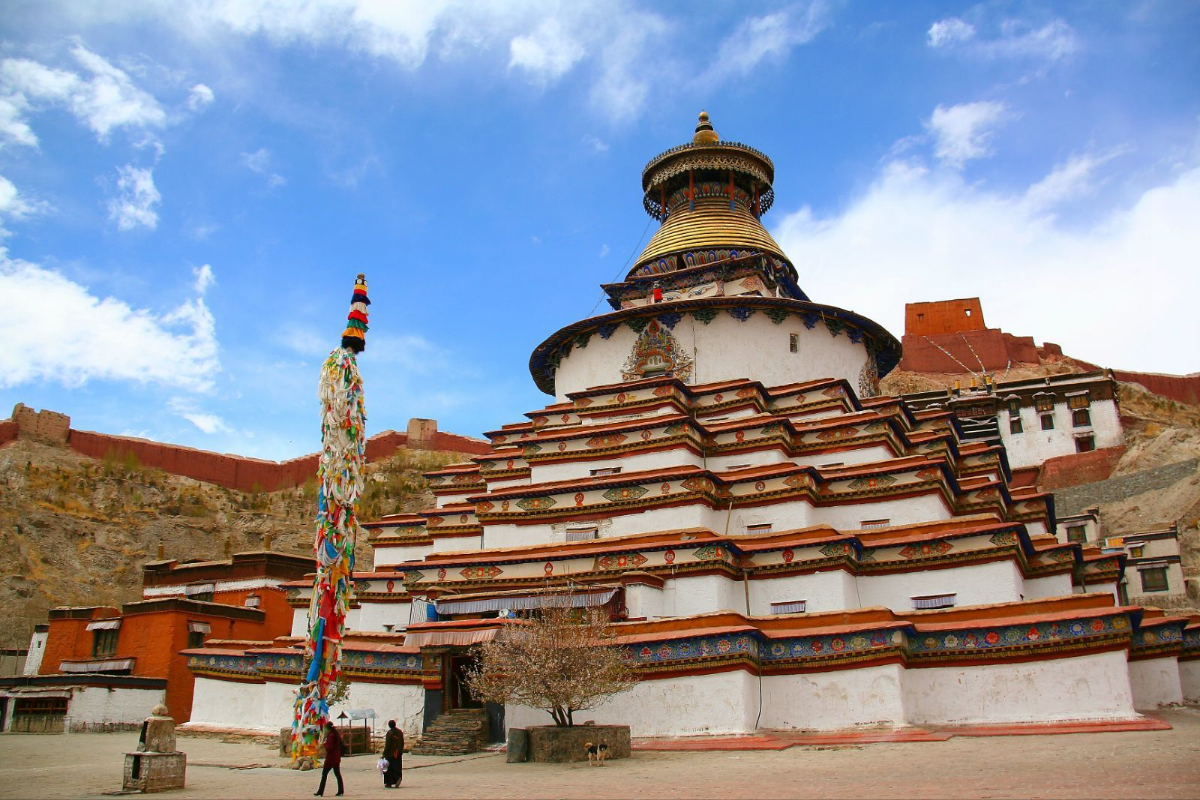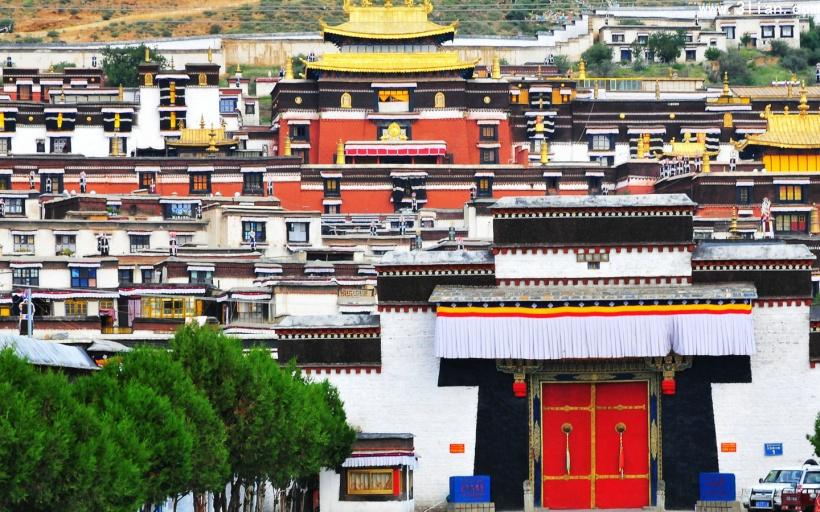Norbulingka Palace
Chinese name: 罗布林卡 (Luo Bu Lin Ka)
Location: No.21 Luobulinka road, Chengguan district, Lhasa, Tibet.
Ticket: Entrance ticket: CNY80.00 during 01May-31Oct, CNY60.00 during 01Nov-30Apr
Estimated tour time:1-3 hours
Recommended time to visit: Whole year
Nearby attractions: Potala Palace, Jokhang Monastery, Barkhor Street, Drepung Monaster etc.
Norbulingka Palace is situated in the west side of Lhasa, a short distance to the southwest of Potala Palace. Norbulingka covers an area of around 36 hectares (89 acres) and considered to be the largest man made garden in Tibet.Built from 1755 and under the reconstructions of different Dalai Lamas, Norbulingka expands its scale into over 360,000 square meters and more than 374 rooms, including Dalai Lamas' palaces for 7th to 14th. Dotted with various kinds of precious flowers and plants, it is the genuine “Plateau Oxygen Bar”.
Norbulingka was served as the traditional summer residence of the successive Dalai Lamas to deal with the government issues and hold religious activities from the 1780s up until the 14th Dalai Lama's exile in 1959. During the reign of the Dalai Lamas (from the 7th Dalai Lama onwards), their annual shifting of residence from the Potala Palace to Norbulingka Palace was also an elaborate festive event. The Dalai Lama used to be escorted in a glittering procession to spend 6 months of the summer season in the Norbulingka Palace.
Part of the "Historic Ensemble of the Potala Palace", Norbulingka is recognized as a UNESCO World Heritage Site, and was added as an extension of this Historic Ensemble in 2001, It was served both as administrative centre and religious centre, and it's a unique representation of Tibetan palace architecture.
Norbulingka Palace, is now a tourist attraction. The palace has a large collection of Italian chandeliers, Ajanta frescoes, Tibetan carpets, and many other artifacts. Murals of Buddha and the 5th Dalai Lama are seen in some rooms. The 14th Dalai Lama’s (who fled from Tibet and took asylum in India) meditation room, bedroom, conference room and bathroom are part of the display and are explained to tourists.
Norbulingka Palace is considered the premier park of all such horticultural parks in similar ethnic settings in Tibet. During the summer and autumn months, the parks in Tibet, including the Norbulinga, become hubs of entertainment with dancing, singing, music and festivities. The park is where the annual Sho Dun or 'Yoghurt Festival' is held.
● Sho Dun Festival
Sho Dun Festival, also spelt Shoton Festival, (popularly known as the "yogurt festival") is an annual festival held at Norbulingka. The date for the festival is set according to the Tibetan calendar, which is a Lunar-based calendar. The festival is celebrated during the seventh month in the first seven days of the Full Moon period, which corresponds to dates in July/August according to the Gregorian calendar. The week-long festivities are marked by eating and drinking, with Ache Lhamo, the Tibetan opera performances as the highlight, held in the park and other venues in the city. On this occasion yak races are a special attraction held in the Lhasa stadium.
During this festival, famed Opera troupes from different regions of Tibet perform at the Norbulingka grounds; the first opera troupe was founded in the 15th century by Tangtong Gyelpo, considered the Leonardo da Vinci of Tibet. Over the centuries other opera formats of the 'White Masked Sect' and the "innovative" 'Black Masked Sect' added to the repertoire, and all these forms and subsequent innovations are enacted at the Sho Dun festival.The Chinese observe the holidays of the Chinese calendar at the Norbulingka grounds with Tibetan music and dance under Government patronage. Tibetans also observe traditional holidays with Tibetan music and dance at this venue.
- HOTEST
- RECOMMEND
